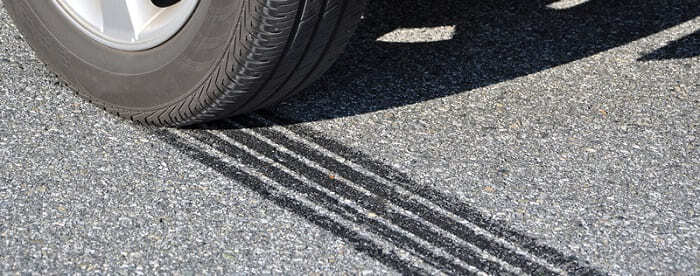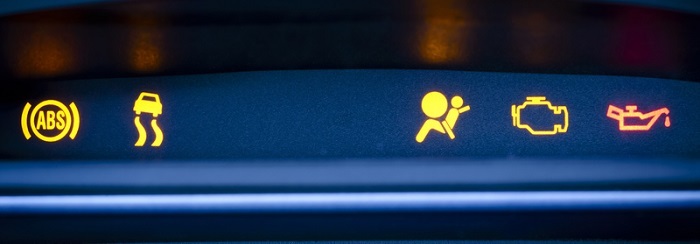
 Data Structure
Data Structure Networking
Networking RDBMS
RDBMS Operating System
Operating System Java
Java MS Excel
MS Excel iOS
iOS HTML
HTML CSS
CSS Android
Android Python
Python C Programming
C Programming C++
C++ C#
C# MongoDB
MongoDB MySQL
MySQL Javascript
Javascript PHP
PHP
- Selected Reading
- UPSC IAS Exams Notes
- Developer's Best Practices
- Questions and Answers
- Effective Resume Writing
- HR Interview Questions
- Computer Glossary
- Who is Who
What is the full form of ABS ?
Introduction
An anti-lock braking system (ABS) is a safety feature used in automobiles to prevent the wheels from locking up during hard braking. The system works by rapidly releasing and reapplying the brakes to a wheel that is about to lock up, allowing the driver to maintain control of the vehicle and avoid obstacles.

ABS has been mandatory in many countries for all new passenger cars and light trucks since the 1990s. The system was first developed for use in aircraft and was later adapted for use in automobiles. ABS reduces the stopping distance of a vehicle, especially on slippery or wet road surfaces, by preventing the wheels from skidding. ABS is an important safety feature that has helped to reduce the number of accidents caused by wheel lockup during hard braking.
Important points about ABS
Some important points about ABS include
Prevents wheel lockup ? ABS helps to prevent wheel lockup during hard braking, which can reduce stopping distances and improve vehicle stability.
Works on all road surfaces ? ABS is effective on all road surfaces, including wet, icy, and gravel roads, as well as on dry pavement.
Does not guarantee shorter stopping distances ? While ABS can reduce stopping distances in some situations, it does not guarantee shorter stopping distances in all situations.
Can be affected by tire condition ? ABS performance can be affected by tire condition, and it is important to ensure that your tires are in good condition to ensure optimal ABS performance.
Not a substitute for safe driving ? While ABS is an important safety feature, it is not a substitute for safe driving practices. Drivers must still exercise caution, maintain a safe following distance, and avoid distractions while driving.

What is the need for ABS?
The need for ABS arises from the fact that wheel lockup during hard braking can cause a loss of control of the vehicle, which can result in an accident. Here are some key reasons why ABS is needed
Improves safety ? ABS improves safety on the road by helping drivers to maintain control of their vehicles during hard braking, which can help to prevent accidents.
Reduces stopping distances ? By preventing wheel lockup, ABS can reduce stopping distances on wet, icy, and gravel roads, as well as on dry pavement.
Increases stability and control ? ABS helps to improve vehicle stability and control, which can be especially important in emergency situations where a driver needs to make a sudden evasive maneuver.
prevents skidding ? By preventing wheel lockup, ABS prevents skidding, which can cause a loss of control and an accident.
Complements other safety features ? ABS complements other safety features, such as airbags and seatbelts, to provide a comprehensive safety system in a vehicle.
Required by law ? ABS has been mandated by law in many countries for all new passenger cars and light trucks since the 1990s, demonstrating its importance as a safety feature.
Increases driver confidence ? ABS can increase driver confidence by providing a feeling of greater control and stability in emergency situations.
Improves resale value ? ABS is now considered a standard safety feature in modern vehicles, and having ABS can improve the resale value of a vehicle.
How ABS Works
ABS is a computerized system that is designed to prevent wheel lockup during hard braking. When the driver applies the brakes, the ABS system monitors the speed of each wheel using sensors. If the system detects that one or more wheels are about to lock up, it will release the brake pressure on that wheel, allowing it to continue rotating.
This is achieved by opening and closing valves in the brake lines. By doing this, ABS helps to prevent the wheels from skidding, which can cause a loss of control of the vehicle. The system then reapplies the brake pressure, and the cycle repeats itself until the vehicle comes to a stop. The entire process happens very quickly, in a matter of milliseconds, and it is designed to be imperceptible to the driver. ABS is effective on all road surfaces, including wet, icy, and gravel roads, as well as dry pavement.
It is important to note that ABS does not guarantee shorter stopping distances in all situations, and other factors such as tire condition, road conditions, and vehicle weight can also affect stopping distance. Nonetheless, ABS is a valuable safety feature that can help prevent accidents and keep drivers and passengers safe on the road.
Conclusion
In conclusion, the anti-lock braking system (ABS) has been an important innovation in automotive safety. By preventing wheels from locking up during hard braking, ABS allows drivers to maintain control of their vehicles and avoid accidents. This technology has become mandatory in many countries, and it has helped to significantly reduce the number of accidents caused by wheel lockup. Despite its importance, the development of ABS has not been without its challenges, and researchers continue to work on improving the technology. With ongoing advancements and improvements, ABS is likely to remain an essential safety feature for vehicles in the years to come.
FAQs
Q1. What happens when the ABS warning light comes on?
Ans. The ABS warning light on your dashboard indicates that there is a problem with your vehicle's ABS system. When this light comes on, it is important to have your vehicle inspected by a qualified mechanic, as the system may not function properly in the event of an emergency.
Q2. How does ABS compare to other safety features like traction control?
Ans. While ABS and traction control are both safety features designed to improve vehicle stability and control, they work in different ways. ABS prevents wheel lockup during hard braking, while traction control helps prevent wheel spin during acceleration. Both features are important for safe driving and are often included.
Q3. Can ABS prevent all accidents?
Ans. While ABS can help prevent accidents caused by wheel lockup during hard braking, it cannot prevent all accidents. In other situations, drivers still need to exercise caution and good judgment to avoid accidents.

